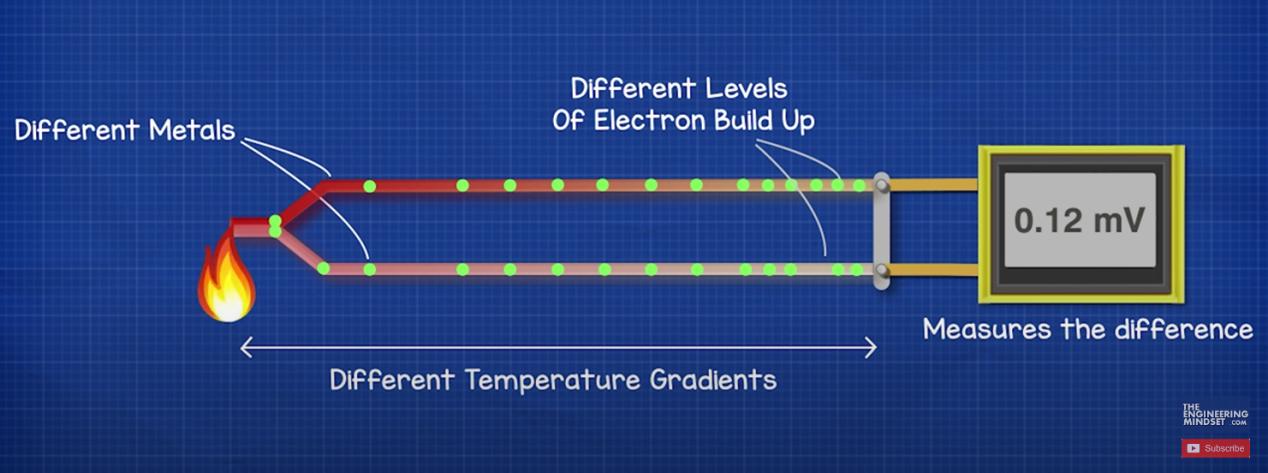A thermocouple refers to a type of temperature sensor utilized extensively in scientific and industrial settings for temperature measurement. The fundamental operating principle of a thermocouple relies on the thermoelectric effect. Typically constructed from two dissimilar metal wires, a thermocouple features a hot junction formed by their convergence and a cold junction connected to a temperature-measuring instrument. When subjected to varying temperatures, the hot junction generates a voltage differential between the two metal wires. This voltage difference, termed thermoelectric voltage, is directly proportional to the temperature gradient across the junction. Through meticulous measurement and analysis of this voltage, the temperature at the hot junction can be accurately determined. Renowned for their robustness, versatility, and broad temperature measurement range, thermocouples find wide-ranging applications across scientific research, industrial processes, and engineering domains.

(From The Engineering Mindset)
When discussing thermocouples, we are essentially delving into an instrument designed for temperature measurement in environments of extreme conditions. Envision yourself within a manufacturing facility's workshop, engulfed by roaring furnaces and machinery emanating intense heat. In such a setting, a dependable means of temperature measurement becomes imperative, and herein lies the role of thermocouples.
The underlying principle of thermocouples is elegantly straightforward. They comprise two dissimilar metal wires, bonded or compressed to form a junction, termed the "hot end." The opposite end connects to a measuring apparatus, known as the "cold end." Exposure of the hot end to elevated temperatures induces a subtle electrical potential disparity between the metal wires. This potential discrepancy fluctuates in tandem with temperature alterations, akin to a mirror reflecting the environmental temperature dynamics.
This generation of potential disparity is rooted in the thermoelectric effect, whereby the junction of two dissimilar metals produces a voltage difference in response to temperature differentials—a phenomenon commonly referred to as the Seebeck effect. Electrons within the metals perpetually migrate as temperatures ascend or descend, engendering the potential difference. Upon transmission to the measuring apparatus, this potential disparity undergoes interpretation and analysis. By quantifying its magnitude, the measuring apparatus accurately deduces the temperature at the hot end.
Consequently, thermocouples transcend mere temperature-measuring tools, embodying sentinels capable of operating within extreme environments, perpetually safeguarding the stability and security of industrial processes.